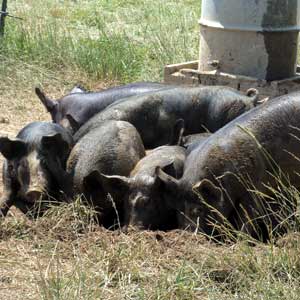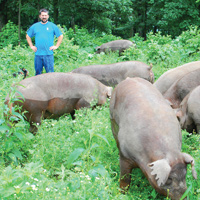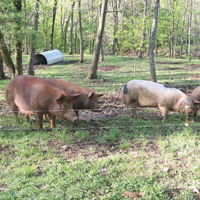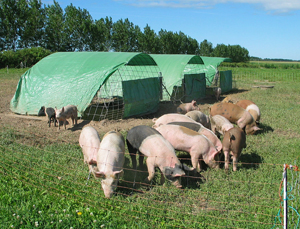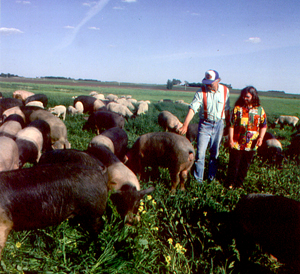By Aaron and Melissa Miller
We’ve been raising pigs on pasture for the past 12 years. Our beef customers were asking about pork, and we decided it was a good candidate to round out our meat selection at the various markets we serve.
Pigs have become a profit center for us because we’re able to fill our delivery truck and sales trailer with a broader range of products when we go to market, making the days more profitable. Stacking pork atop our core grassfed beef business adds value without adding too much in the way of expense, including labor.
Continue reading “Pigs stack well with our grassfed beef”
